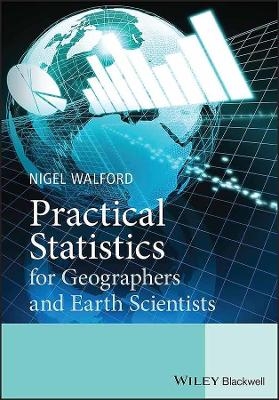
Practical Statistics for Geographers and Earth Scientists
John Wiley & Sons Inc (Verlag)
978-0-470-84915-6 (ISBN)
- Lieferbar (Termin unbekannt)
- Versandkostenfrei innerhalb Deutschlands
- Auch auf Rechnung
- Verfügbarkeit in der Filiale vor Ort prüfen
- Artikel merken
Learning outcomes included in each chapter
International focus
Explains the underlying mathematical basis of spatial and non-spatial statistics
Provides an geographical, geospatial, earth and environmental science context for the use of statistical methods
Written in an accessible, user-friendly style
Datasets available on accompanying website at www.wiley.com/go/Walford
NIGEL WALFORD Kingston University, london, UK
Preface xi
Acknowledgements xiii
Glossary xv
Section 1 First principles 1
1 What's in a number? 3
Learning outcomes
1.1 Introduction to quantitative analysis 4
1.2 Nature of numerical data 9
1.3 Simplifying mathematical notation 14
1.4 Introduction to case studies and structure of the book 19
2 Geographical data: quantity and content 21
Learning outcomes
2.1 Geographical data 21
2.2 Populations and samples 22
2.3 Specifying attributes and variables 43
3 Geographical data: collection and acquisition 57
Learning outcomes
3.1 Originating data 58
3.2 Collection methods 59
3.3 Locating phenomena in geographical space 87
4 Statistical measures (or quantities) 93
Learning outcomes
4.1 Descriptive statistics 93
4.2 Spatial descriptive statistics 96
4.3 Central tendency 100
4.4 Dispersion 118
4.5 Measures of skewness and kurtosis for nonspatial data 124
4.6 Closing comments 129
5 Frequency distributions, probability and hypotheses 131
Learning outcomes
5.1 Frequency distributions 132
5.2 Bivariate and multivariate frequency distributions 137
5.3 Estimation of statistics from frequency distributions 145
5.4 Probability 149
5.5 Inference and hypotheses 165
5.6 Connecting summary measures, frequency distributions and probability 169
Section 2 Testing times 173
6 Parametric tests 175
Learning outcomes
6.1 Introduction to parametric tests 176
6.2 One variable and one sample 177
6.3 Two samples and one variable 201
6.4 Three or more samples and one variable 210
6.5 Confi dence intervals 216
6.6 Closing comments 219
7 Nonparametric tests 221
Learning outcomes
7.1 Introduction to nonparametric tests 222
7.2 One variable and one sample 223
7.3 Two samples and one (or more) variable(s) 245
7.4 Multiple samples and/or multiple variables 256
7.5 Closing comments 264
Section 3 Forming relationships 265
8 Correlation 267
Learning outcomes
8.1 Nature of relationships between variables 268
8.2 Correlation techniques 275
8.3 Concluding remarks 298
9 Regression 299
Learning outcomes
9.1 Specification of linear relationships 300
9.2 Bivariate regression 302
9.3 Concluding remarks 336
10 Correlation and regression of spatial data 341
Learning outcomes
10.1 Issues with correlation and regression of spatial data 342
10.2 Spatial and temporal autocorrelation 345
10.3 Trend surface analysis 378
10.4 Concluding remarks 394
References 397
Further Reading 399
Index 403
Plate section: Statistical Analysis Planner and Checklist falls between pages 172 and 173
| Erscheint lt. Verlag | 12.4.2019 |
|---|---|
| Verlagsort | New York |
| Sprache | englisch |
| Maße | 74 x 119 mm |
| Gewicht | 680 g |
| Themenwelt | Mathematik / Informatik ► Mathematik ► Statistik |
| Naturwissenschaften ► Geowissenschaften ► Allgemeines / Lexika | |
| Naturwissenschaften ► Geowissenschaften ► Geografie / Kartografie | |
| ISBN-10 | 0-470-84915-0 / 0470849150 |
| ISBN-13 | 978-0-470-84915-6 / 9780470849156 |
| Zustand | Neuware |
| Haben Sie eine Frage zum Produkt? |
aus dem Bereich


